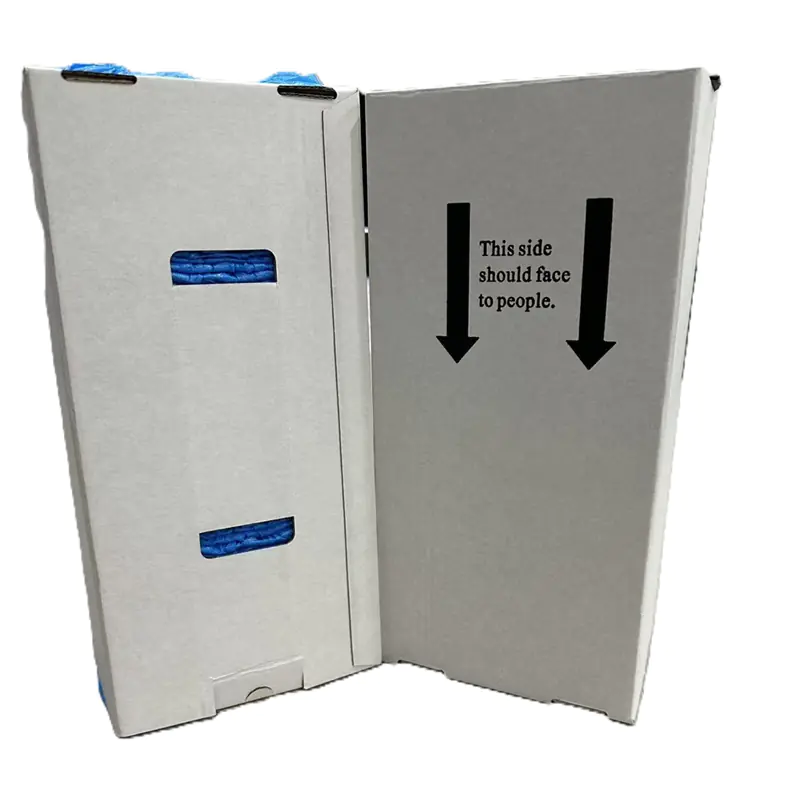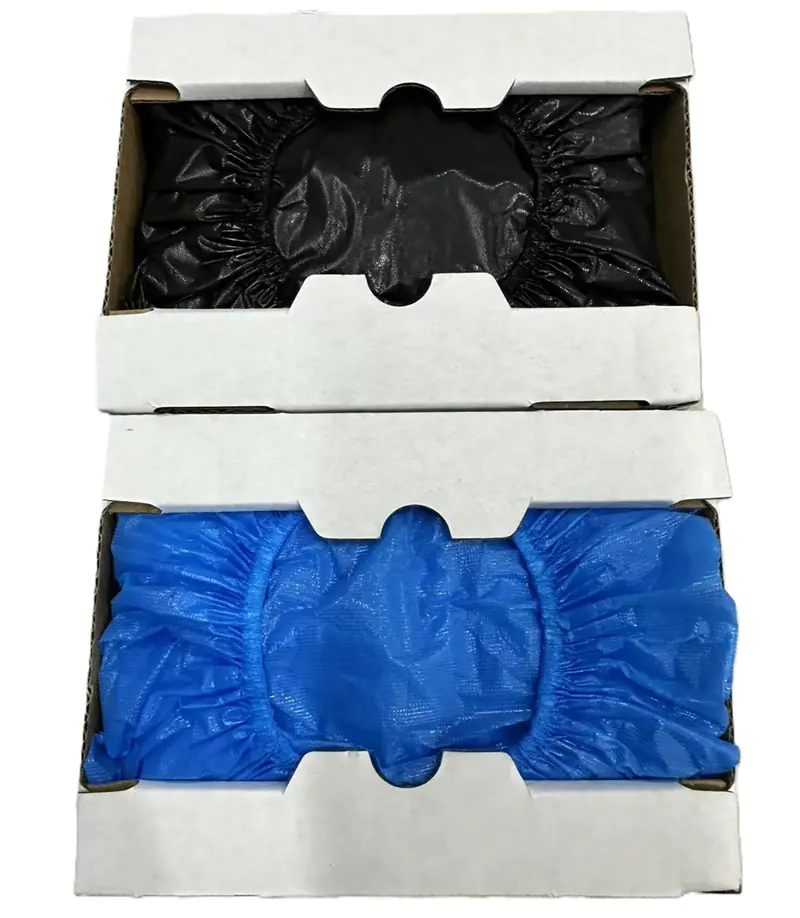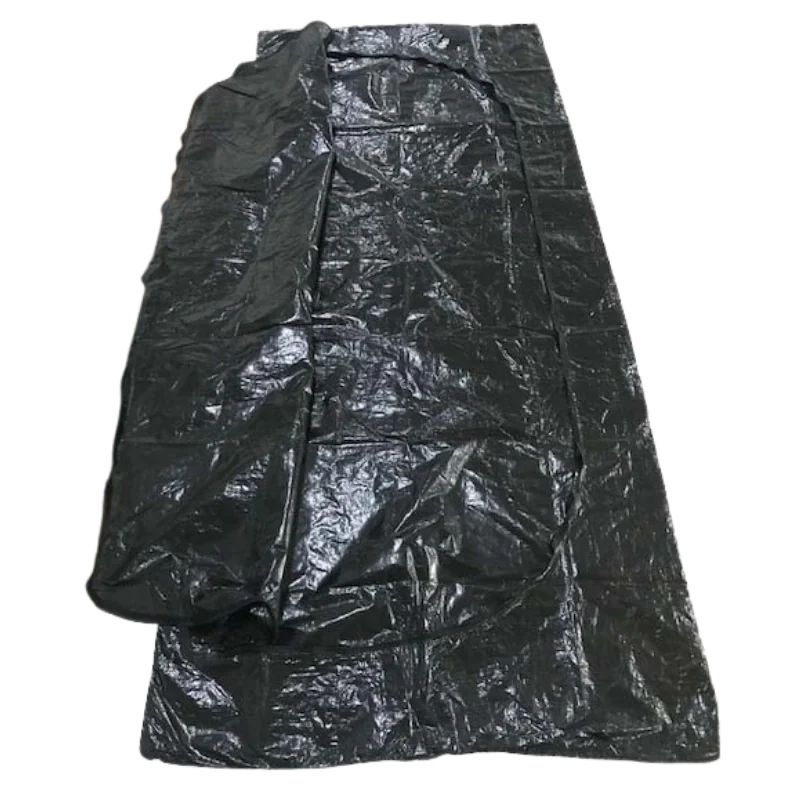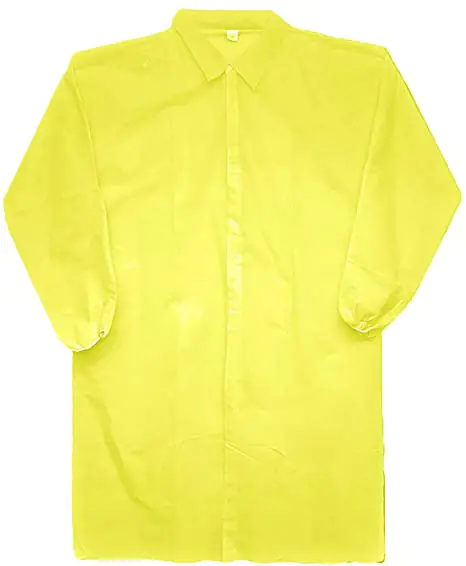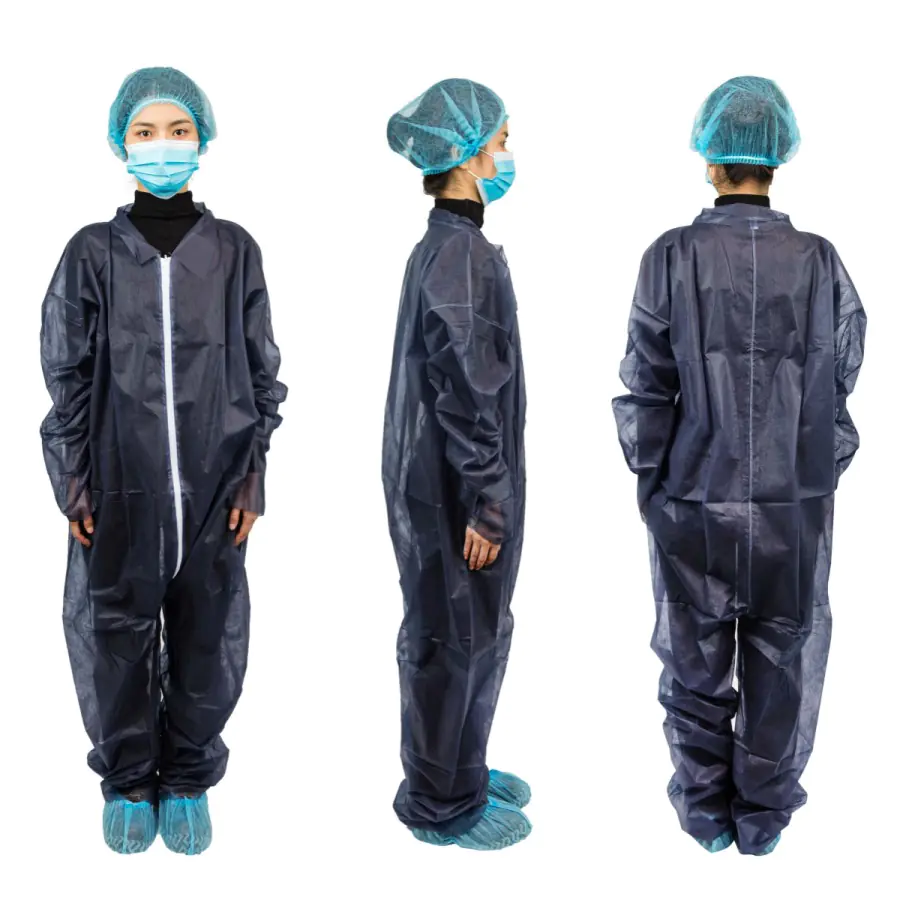Have you ever seen workers wearing special coverings over their heads and necks? Maybe in a factory, a hospital, or a place where food is made? These coverings might be disposable face hoods. They are an important piece of safety gear called Personal Protective Equipmentou PPE.
Keeping safe at work is very important. We also need to make sure that work areas, especially clean ones, stay clean. Cagoules à usage unique help with both of these jobs. They protect workers, and they help keep work areas free from things like hair or dust.
Let’s learn all about what these cagoules jetables are, why they are useful, and why choosing a jetable one is often the best choice for protection.
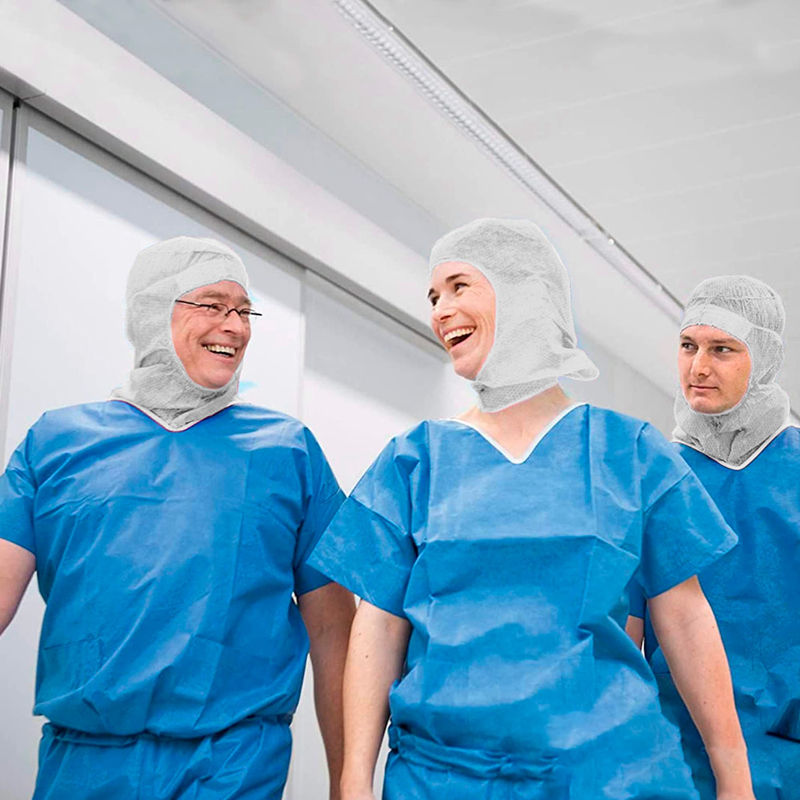
What Exactly is a Disposable Face Hood?
Imagine a soft, light covering that slips over your head. It covers your hair, your neck, and sometimes even your shoulders. It has an opening for your face so you can see, breathe, and talk. That’s a face hood!
The word “disposable” means it’s made to be used only one time. After you use it, you throw it away safely. You don’t wash it and use it again.
These hoods are made from special materials that are:
- Léger : They don’t feel heavy on your head.
- Breathable: Air can move through them, so you don’t get too hot.
- Soft: They feel comfortable against your skin.
Common materials used are called non-woven fabrics. Think of fabrics that are not knitted or woven like your t-shirt. They are often made from something called polypropylene (pol-ee-PRO-puh-leen), which is a type of plastic fiber made into a soft sheet. Sometimes, different layers are combined to make the material stronger or better at blocking things, like in SMS fabric.
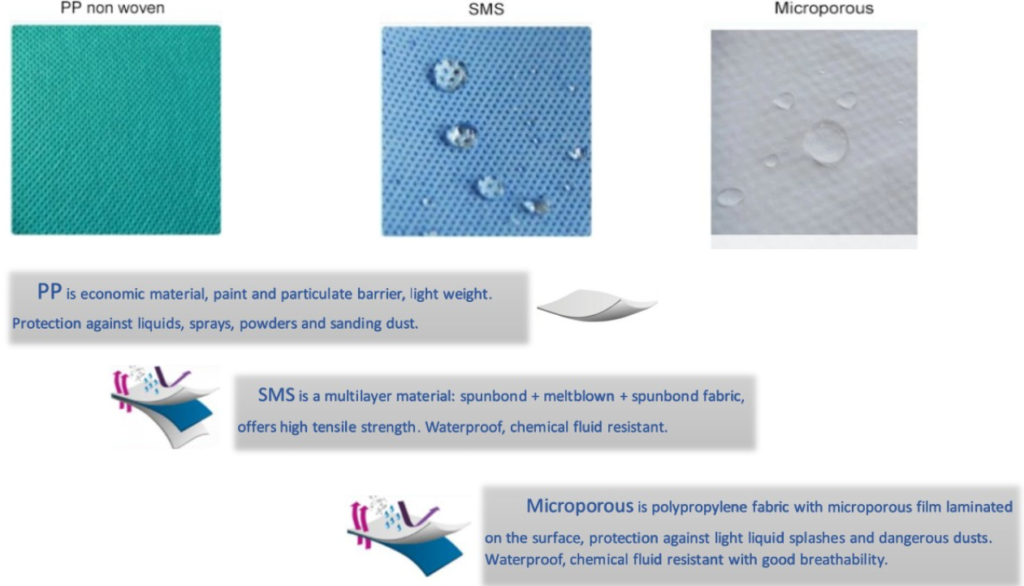
Why Should Someone Wear a Disposable Face Hood?
Wearing a hotte jetable might seem simple, but it does some very important jobs. There are two main reasons people wear them:
- To Keep the Work Area Clean (Contamination Control)
- Stopping Hair: We all lose hairs without even noticing! In places like food factories, hospitals, or clean labs, even one hair falling into the wrong place can cause big problems. A hood keeps all your hair tucked away safely.
- Stopping Skin Flakes: Our skin also sheds tiny flakes all the time. Hoods help keep these tiny bits contained, which is super important in making medicines or computer chips where everything must be perfectly clean.
- Keeping Germs In: Sometimes, the hood can help stop germs from the wearer’s hair or skin from getting into the clean area.
- To Keep the Worker Safe (Personal Protection)
- Blocking Dust and Dirt: If you work somewhere dusty, like construction or sanding wood, a hood helps keep the dust out of your hair and off your neck.
- Protection from Splashes: In some jobs, like painting or working with certain liquids, things might splash. A hood can offer some protection against light splashes of non-dangerous liquids getting on your head or neck.
- Keeping Clean: It simply helps keep the worker’s head and neck area cleaner during messy jobs.
So, cagoules jetables work two ways: protecting the product or work area from the person, and protecting the person from the work environment.
What Are the Key Parts of a Disposable Hood?
Disposable face hoods come in a few styles, but most share some common features:
- Couverture complète : They are designed to cover the entire head (except the face opening), the ears, and the neck. Some styles go down further to cover the shoulders too. This provides maximum protection and containment.
- Soft Material: As we talked about, they use non-woven fabrics like PP (polypropylene) or SMS. This makes them comfortable to wear for long periods. Materials like Spunlace are extra soft. You can find many soft and breathable disposable hoods available.
- Elastic Face Opening: The hole for your face usually has a soft elastic band around it. This helps the hood fit snugly but comfortably around your face. It keeps the hood in place and helps seal the edges.
- Neck and Shoulder Coverage: Many hoods extend down to cover the neck completely. Some styles, like astronaut caps, cover the shoulders as well, fitting under other protective clothing like coveralls.
- Ties (Optional): Some hoods, especially surgical ones, might have ties at the back or neck area. These ties help make the fit even more secure.
- Attached Masks (Optional): Some hoods have a face mask already attached. This combines head and face protection into one easy piece. We see this often in astronaut caps often come with a face mask attached.
Let’s summarize these features:
| Fonctionnalité | Description | Main Benefit |
|---|---|---|
| Coverage | Covers head, neck, sometimes shoulders | Keeps hair in, protects skin |
| Matériau | Soft, breathable non-woven fabric (PP, SMS, etc.) | Comfortable to wear, allows air flow |
| Face Opening | Usually has elastic band | Snug fit, keeps hood in place |
| Neck/Shoulder | Extends down for more coverage | Better protection and containment |
| Ties/Mask | Optional features for secure fit or added safety | Custom fit, combined protection |

What Are the Benefits of Using Disposable Hoods?
Choosing disposable face hoods offers many good points, especially compared to reusable ones:
- Very Hygienic: Because you use a hotte jetable only once, it’s always clean and fresh. This is super important for stopping the spread of germs, especially in hôpitaux, labs, and food places. You don’t have to worry if a reusable hood was washed properly.
- Excellent Contamination Control: A new, clean hood every time means the best protection against hair or skin flakes getting where they shouldn’t. This helps keep products pure and environments sterile.
- So Convenient: No washing needed! Workers just grab a new hood, wear it, and then throw it away. This saves time and effort. No need for laundry services or keeping track of used hoods.
- Comfortable Protection: Modern matériaux non tissés are designed to be light and let air through. This means workers can wear them for hours without feeling too hot or uncomfortable.
- Cost-Effective Choice: While you buy them more often, cagoules jetables can actually save money. You don’t have the costs of washing, drying, repairing, and replacing reusable hoods. Plus, the cost of one contamination problem can be much higher than the cost of the hoods.
- Reliable Safety: Every hotte jetable provides the same level of protection. Reusable hoods can wear out over time, and their protection level might decrease after many washes. With disposables, you know what you’re getting every time.
- Easy to Store and Use: They often come folded flat in bags or boxes, taking up little space. They are easy to hand out to workers when needed.
Different Types of Disposable Hoods
Not all cagoules jetables are exactly the same. There are different styles for different needs:
- Basic Hoods: These cover the head and neck with an elastic opening for the face. Good for general dust protection and keeping hair contained.
- Astronaut Caps: These offer more coverage, often extending down over the shoulders. They provide a better seal when worn with coveralls. Some have attached masks.
- Balaclava Style Hoods: These fit very closely around the head and neck, like a ski mask but made from jetable material. They offer excellent coverage. Look for disposable balaclava style hoods for this type.
- Surgical Hoods: These are designed for use in operating rooms. They often cover the head and neck fully and may have ties for a secure fit. You might see disposable surgical hoods used by doctors and nurses in hospitals.
- Hoods with Face Masks: Some hoods have a standard disposable medical face mask sewn right in. This gives head, neck, nose, and mouth protection all in one piece.
- Hoods with Face Shields: Less common, but some hoods might have a clear plastic shield attached to protect the eyes and face from splashes.
The best type depends on the job and the level of protection needed.

Where Are Disposable Face Hoods Used?
You can find people using disposable face hoods in many different jobs and industries:
- Soins de santé Doctors, nurses, surgeons, and other hospital workers wear them, especially in operating rooms, clean areas, and sometimes when caring for patients to prevent spreading germs.
- Laboratoires : Scientists and lab workers use them to protect experiments from contamination (like hair falling in) and to protect themselves from dust or light splashes.
- Pharmaceuticals (Medicine Making): Making medicines requires extremely clean conditions. Hoods are essential to prevent contamination.
- Food Processing and Service: Workers making or packaging food wear hoods (along with hair nets or beard covers) to make sure hair doesn’t get into the food. This is important for food safety.
- Cleanrooms: Places that make electronics (like computer chips) must be incredibly clean. Workers wear full protective gear, including hoods, to keep dust and particles away from sensitive products.
- Painting and Decorating: Painters wear hoods to keep paint spray off their hair and neck.
- Manufacturing and Industry: In factories with dust, powders, or light non-hazardous sprays, hoods provide basic protection and keep workers cleaner.
- Agriculture: Sometimes used when working with dusty materials or certain sprays.

How to Choose the Right Disposable Hood
If you need cagoules jetables for work, think about these things:
- What Job Will It Be Used For? Does the job need to keep things super clean (like food or labs)? Or is it more about protecting the worker from dust (like construction)? This helps decide the level of protection needed.
- What Material is Best?
- PP (Polypropylene): Good for basic protection, lightweight, breathable, low cost. Great for keeping hair in and light dust out.
- SMS: Three layers, offers better protection against particles and light splashes than basic PP, while still being breathable. Good for labs or light industry.
- Spunlace: Very soft and comfortable, often used in medical settings.
- How Much Coverage is Needed? Does it just need to cover hair and neck, or should it cover the shoulders too (like an astronaut cap)?
- What is the Fit Like? Does the elastic opening feel comfortable? Does it stay in place? If extra security is needed, look for hoods with ties.
- Does it Need an Attached Mask? For some jobs, a hood with a built-in mask is easier than wearing two separate items.

Using Your Disposable Hood Correctly
To get the best protection and keep things clean, use the hood the right way:
- Clean Hands: Make sure your hands are clean before touching the hood.
- Open Carefully: Take the hood out of its package. Open it up gently.
- Put It On: Pull the hood over your head, starting from the front or back depending on the style. Make sure all your hair is tucked inside.
- Ajustez l'ajustement : Pull the hood down so it covers your neck (and shoulders if it’s that style). Make sure the elastic edge fits snugly around your face opening. If it has ties, tie them securely but comfortably.
- Wear It: Keep the hood on for the whole time you need protection or need to keep the area clean. Don’t touch it too much while wearing it.
- Take It Off Carefully: When finished, take the hood off without touching the outside surface too much if possible. Roll it up or fold it inwards.
- Throw It Away: Put the used hood straight into the proper trash bin. Remember, it’s for one-time use only!
- Wash Hands: Wash your hands after throwing the hood away.
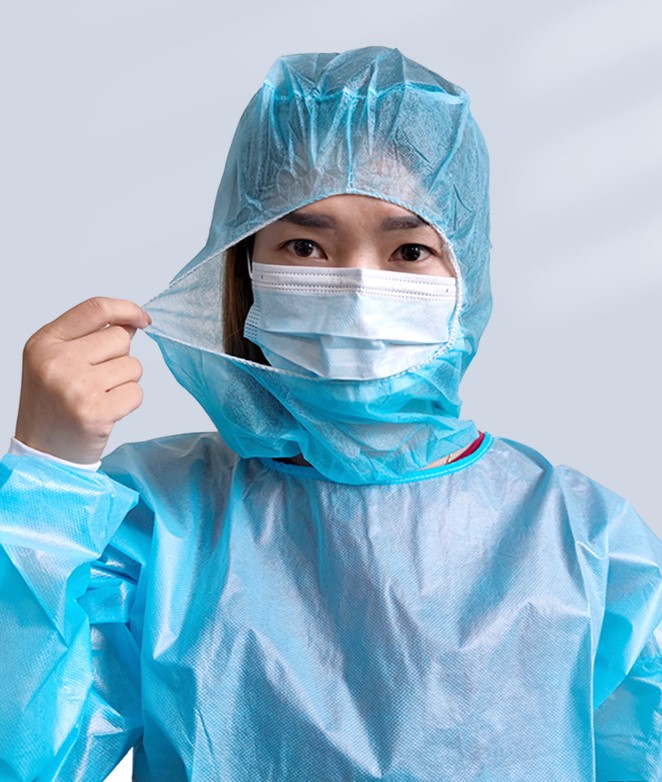
Conclusion: A Smart Choice for Safety and Cleanliness
Disposable face hoods are simple but very useful pieces of protective gear. They help keep workers safe from dust and light splashes, and they play a huge role in keeping sensitive work areas clean by containing hair and skin flakes.
Choosing cagoules jetables makes sense for many reasons. They are hygienic, easy to use, comfortable, and provide reliable protection every time. From hôpitaux and labs to food factories and painting jobs, disposable face hoods are a smart and effective way to protect people and products. They are a key part of keeping many workplaces safe and clean.


